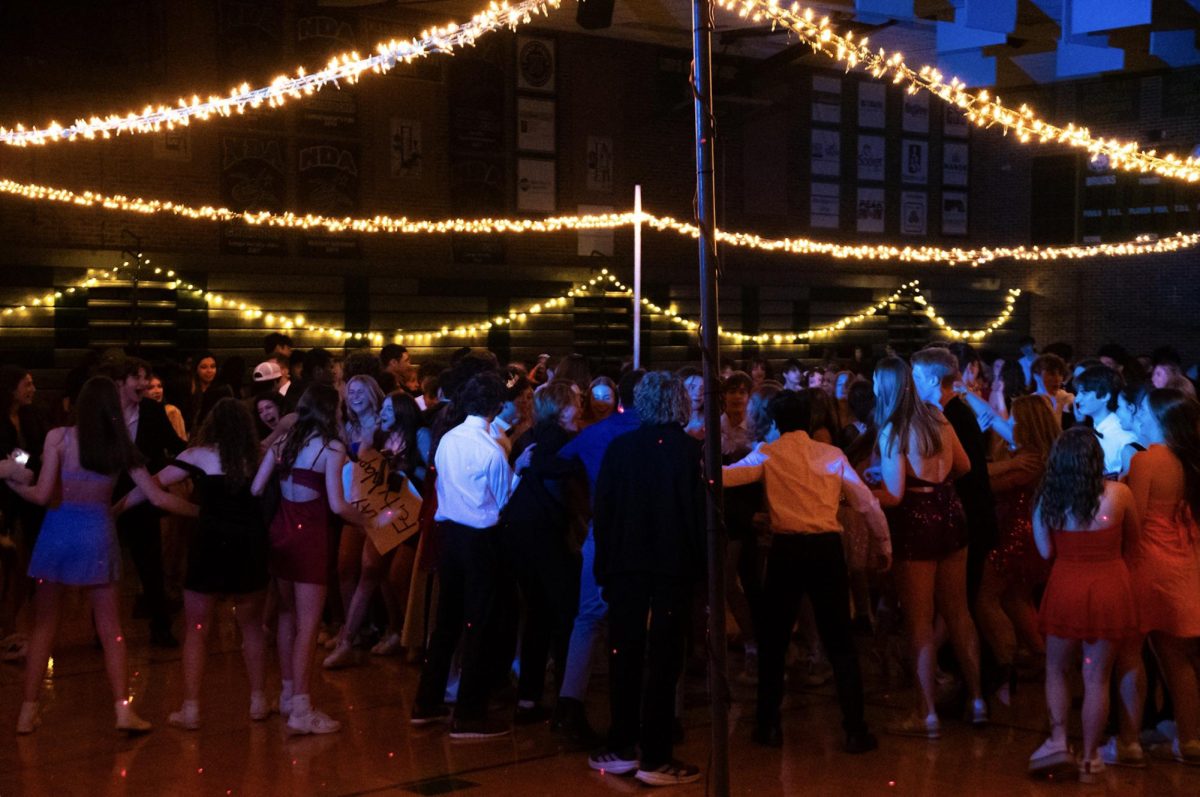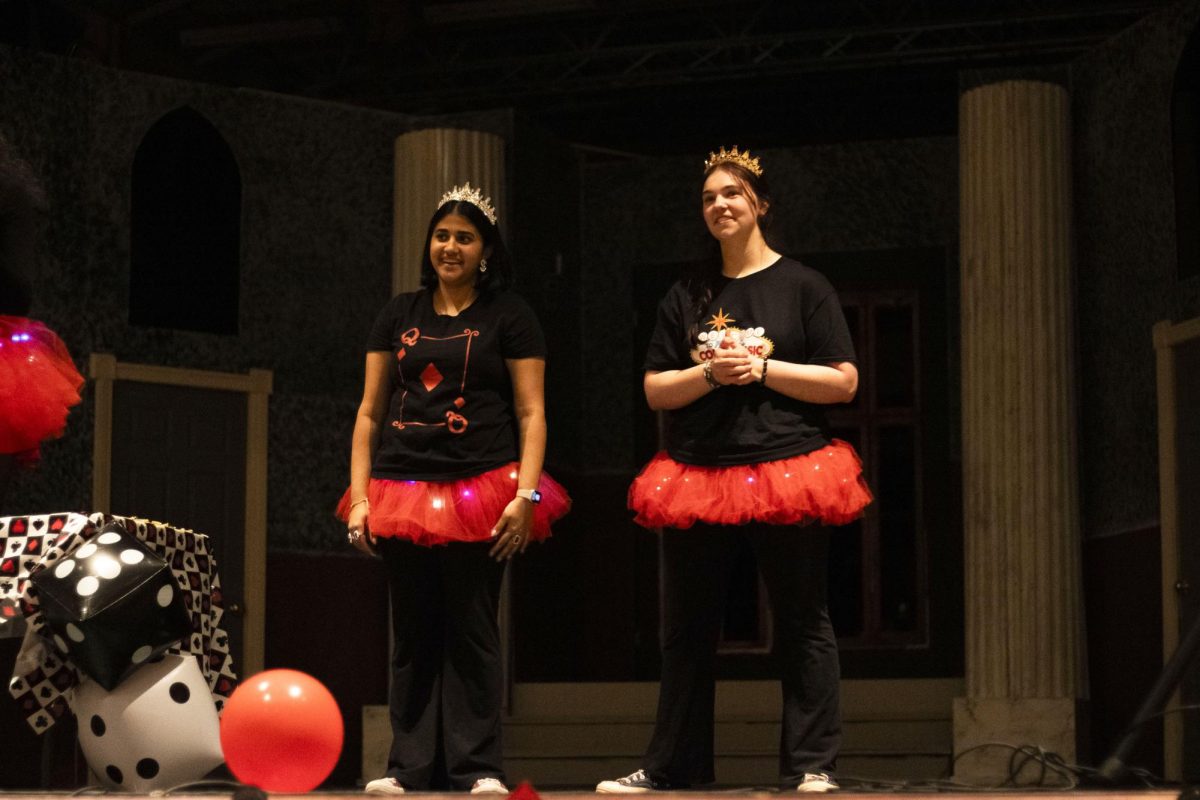Senior Sydni Brown, who is white, was sitting in a parked car in the Stephen’s park parking lot with her boyfriend, former RBHS student Ray Warren, who is black. When a police car pulled in, they drove away, but the police pulled her over when she swerved across the white line at the shoulder of the road.
When the policeman approached the car, he asked for identification from both Brown, the driver, and her boyfriend.
“I feel angry that not only it happened but that the cop who pulled us over thought we were doing something bad based on the color of our skin,” said Brown, who received a verbal warning and was released.
The Missouri attorney general reported in 2017 that black drivers are 85 percent more likely to be stopped by police than white driver in the state. Two years earlier, following the police shooting and death of Michael Brown in Ferguson, the Department of Justice found that while the area had 65 percent black residents,87 percent of the traffic stops police made were of black people.
“At the end of the day I’m gonna always be true to myself,” Warren said. “When some police see black people, they automatically think of them as criminals just because of the way they look.”
Dr. Michael Siegel, a health sciences professor at Boston University,has studied racism linked to fatal police shootings.
“Based on my research, it appears that the history of racism against African Americans has played a role in the racial disparities that we now see in fatal police shootings,” Dr. Siegel said.
“Specifically, structural racism – especially racial residential segregation – is a strong predictor of the magnitude of the black-white disparity in fatal police shootings in a state.” Malcolm D. Holmes,a sociology professor at the University of Wyoming, said there has been long standing conflict between law enforcement and private citizens. The first American police station originated in Boston in 1838 and initially targeted European immigrants, Holmes said. Foreigners from Germany, Britain, Italy and East Europe experienced different treatment in America during that time, which led to an increase in police force in U.S cities out of fear of commotion. Then, once state legislations established Jim Crow laws in the South, African-Americans became the primary target of police forces.
The civil rights movement was a fight for black Americans in America. During that time African-Americans everywhere were dehumanized by segregation and violence. Their freedoms and rights weren’t equal and were not protected in their own communities from white Americans, a condition which lasted through the 1960’s.
“Segregation is the result of a long history of racial discrimination in housing, mortgage approval, zoning, eligibility for government programs, and more.”Dr.Siegel said.
Senior Shaquail Midgyett, who is black, said he is aware of this past and worries when police are corrupt it affects how he sees the rest of police officers.
“You see [police brutality] a lot, so you get used to seeing it,” Midgyett said. “I think it happens because some are racist. They don’t like a certain skin color, and they target you.”
An economist at the University of Chicago told New York Times ,Jens Ludwig,said living in a high-poverty neighborhood increases the risk of violent-crime from the police of citizens. Four out of five residents in poor neighborhoods of the country are black or Hispanic. Police violence occurs at higher rates in segregated areas. Working in poor, violent communities can influence police officers’ perspective, causing them to treat certain races differently based on stereotypes, according about police shooting in U.S News & World Report.
Dr. Siegel said his team’s research indicated that structural racism, measured by “racial disparities in employment, education, economic status, incarceration and racial segregation” is connected with heightened levels of racial disparity at the state level regarding “fatal police shooting rates.” After controlling for other forms of racial discrimination, Dr. Siegel said racial segregation remains a “strong predictor” of increased ratios of black to white fatal police shootings.”
A sergeant with the Missouri Highway Patrol,Joe Veasman has worked for the State Patrol since 2005 and patrolled in Ferguson, Mo., during the Michael Brown riots that sparked the Black Lives Matter movement.
“I have had numerous times where I have stopped a minority who has initially had an attitude with me,” Veasman said. “Maybe this individual has had a bad experience with police officers before, or maybe they have bought in the narrative that cops are just out their to oppress minorities.”
Not only may individuals feel threatened towards police officers but some cops experience a threat towards citizens which may cause an altercation between them.
“We hypothesize that police tend to experience a heightened sense of threat when they work a predominantly Black neighborhood because of inherent racial biases,” Dr. Siegel said. “Thus, they are likely to respond differently to potential threats in these neighborhoods compared to neighborhoods that are not as segregated. This may cause them to feel threatened even when the suspect is unarmed.”
The tension between police officers and citizens has sometimes unraveled because of the amount of attention spread of stories throughout news channels and social media.
“I always try to be cool when the officer approaches me because it always makes things go more smoothly,” Warren said.
Both police officers and the communities affected are angry and feel victimized from this topic creating a division between them.
“Any run-ins I have with [the police], I don’t really talk to them,” Midgyett said. “It makes you wanna distance yourself from them.”
Veasman said he tries to have a good relationship with citizens when he makes contact with them or during a stop to help stop the divide between police and the community.
“Through my contact with [the driver], I attempt to repair some of those bridges that have been burned,” Veasman said. “I may even issue a warning when I would typically issue a ticket because repairing that relationship is more important to me than issuing a ticket.”
Police violence happens every day. There are people dying at the hands of the criminal justice system and no solutions. Although The misconception about all officers from police brutality is one the reasons why there is tension between communities and criminal justice is seperated. One step to building better relationships in the future is not seeing every cop as a threat.
“There are bad cops out there. No one hates these individuals more than good cops,” Veasman said. “However, the narrative that cops are just out to persecute minorities is simply a myth.”
Categories:
Police brutality in the United States
May 2, 2019
0
More to Discover













































































